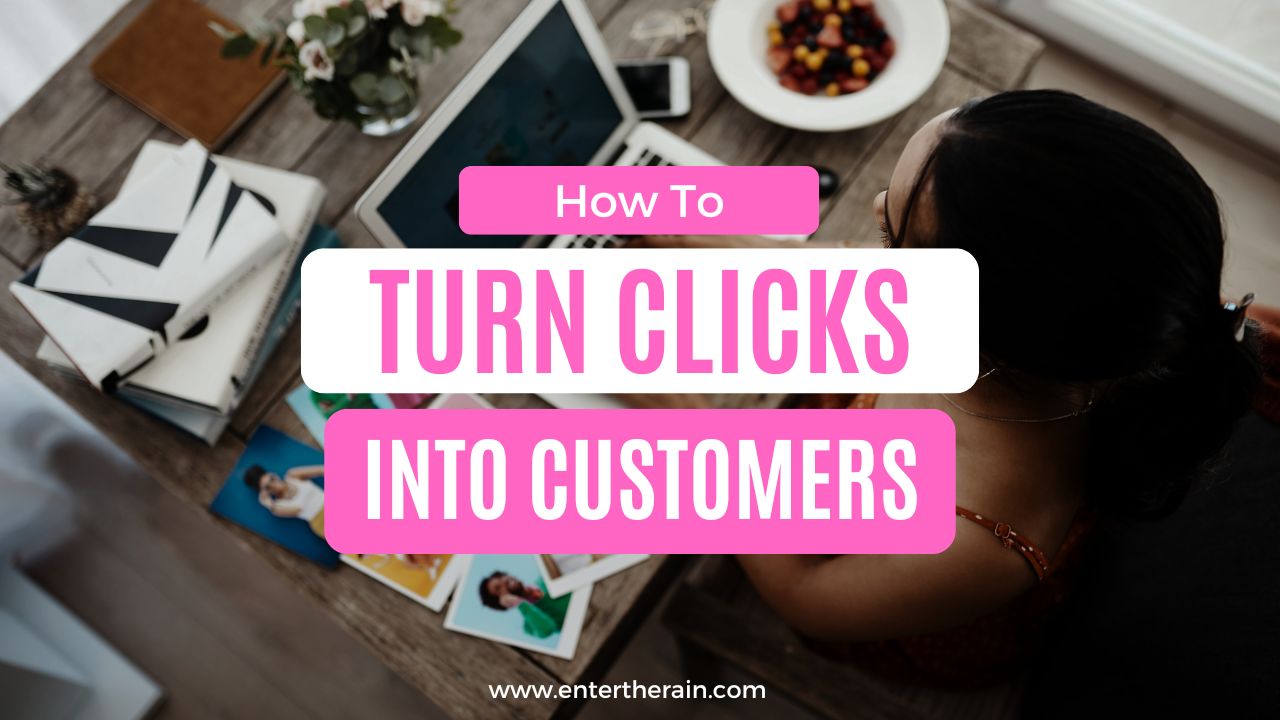You’ve put time and effort into building your company blog, and you’re seeing the clicks roll in. But the real question is this. Are those clicks turning into meaningful engagement, real customers, and a measurable return on investment (ROI)?
It’s one thing to attract readers, but turning them into customers is another. In this post, we’ll dive into how you can craft blog posts that not only attract clicks but also convert them into valuable actions, boosting your business’s bottom line.
Whether your company sells physical goods or offers a service, there are specific strategies to engage readers, build trust, and turn interest into revenue.
Let’s break it down.
1. Define Your Audience & Goals
Before anything else, get clear on your target audience and what you want to achieve with each blog post. Are you trying to:
- Educate potential customers?
- Drive sign-ups or downloads?
- Generate leads?
- Encourage repeat purchases?
For companies selling physical goods, the goal might be to move products directly via click-throughs to your eCommerce website. For service-based companies, it may involve educating prospects about your expertise to build trust, making them more likely to reach out for a consultation. Setting a clear intention for each post will keep it focused and aligned with your ROI goals.
2. Content That Educates and Solves Problems
Customers want value, and whether you’re selling a product or a service, your blog should provide information that solves a problem, offers insight, or educates in some way. Think of your blog as a stepping stone in the buyer’s journey, not just a traffic driver.
- For Physical Goods: If you sell a product, craft blog posts around practical tips, how-tos, and product comparisons. For instance, a company selling fitness equipment might post “5 Essential Tips for Setting Up a Home Gym” and subtly include links to relevant products.
- For Services: Service providers, on the other hand, should focus on building authority and trust. If you’re an IT consulting firm, create posts like “How to Secure Your Business’s Data in 5 Steps.” This educates readers and positions your company as a knowledgeable partner in their industry.
In both cases, ensure each post is relevant, informative, and easy to read. The aim is to be so helpful that readers consider your company a valuable resource.
3. Drive Engagement with Strong Calls to Action
You’re halfway there if your blog attracts readers, but engagement and conversions come from clear, compelling calls to action (CTAs). A CTA should encourage readers to take the next step, whether it’s signing up for a newsletter, exploring your products, or scheduling a consultation.
- For Physical Goods: Use CTAs that link directly to products or a catalog. If you’re writing about skincare, a CTA could be: “Explore our all-natural moisturizers here.” Don’t make readers hunt for products. Provide direct paths that help move them from interest to action.
- For Services: Service companies can use CTAs to drive readers to download resources, request a consultation, or sign up for a webinar. For example, if you run a digital marketing agency, a CTA like “Book a free 15-minute strategy call” can effectively invite interested readers to engage with you further.
Make sure your CTAs are strategically placed in the blog post without overwhelming the reader. Consider including one CTA midway and another at the end, guiding them through to the next step.
4. Create High-Quality Content That Encourages Shares
Quality content that resonates with your audience is likely to be shared, widening your reach. For both product and service-based companies, create posts that are visually appealing, well-researched, and professionally written. This could include images, infographics, and links to reliable sources that add credibility to your blog.
- For Physical Goods: Product companies can create visually engaging posts with images of the product in action, as well as testimonials or case studies. For example, a home decor company might write a post on “Top Trends in Living Room Decor” and include customer photos to inspire potential buyers.
- For Services: Service-based companies can leverage infographics and expert insights to make the content more shareable. If you’re a financial advisor, include charts and visual data that make complex topics easier to understand and more likely to be shared.
When readers find value, they’re more likely to share your post with their networks, increasing visibility and attracting potential customers.
5. Track and Analyze Blog Performance
To understand whether your blog is truly delivering ROI, track its performance. This will give you insight into what’s working and where you may need to adjust.
- Key Metrics to Monitor:
- Page views and unique visits
- Average time on page
- Click-through rate (CTR) on CTAs
- Conversion rates (sign-ups, downloads, purchases)
- Bounce rate
- Social shares
Analyze which topics and types of content yield the most engagement, then double down on those areas. For example, if you notice that “how-to” posts convert better than industry news, focus more on practical guides that address your audience’s pain points.
Use tools like Google Analytics, HubSpot, or even heat mapping software to see where readers are clicking and where they drop off. Understanding these patterns can help you optimize future posts for higher engagement and conversions.
6. Refresh and Repurpose Content Regularly
Content isn’t static, and keeping it fresh can improve its impact. Regularly updating older blog posts with new information, updated statistics, or improved CTAs can increase engagement and boost SEO.
- For Physical Goods: Revisit seasonal product posts, or add new product suggestions based on current trends. A clothing brand, for instance, could refresh a “Best Fall Outfits” post each year with updated styles.
- For Services: Service companies can repurpose successful posts into different formats, like downloadable guides, infographics, or short videos. For example, a consulting firm might turn a popular blog on “Project Management Tips” into an infographic or e-book to keep the content engaging and visible across multiple channels.
Final Thoughts: Crafting Blogs That Drive Real Results
Clicks are great, but if they’re not driving engagement or ROI, your blog isn’t living up to its potential. By focusing on targeted content, clear CTAs, high-quality visuals, and regular performance analysis, you can turn your blog into a powerful tool for customer engagement and revenue growth. Whether you’re selling products or services, the right blog strategy can set your company apart, establishing it as a trusted industry authority while driving meaningful business outcomes.
So, start writing with purpose, engage your readers, and make your blog work as hard as you do.



